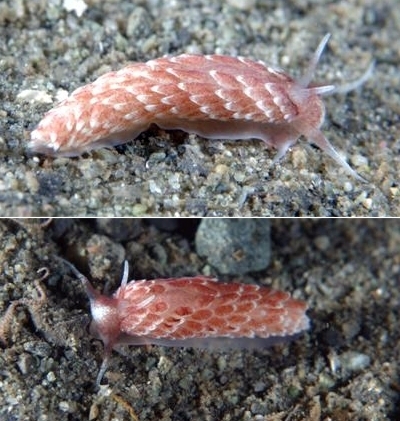
Cerberilla mosslandica
McDonald & Nybakken, 1975
Order: NUDIBRANCHIA
Suborder: AEOLIDINA
Family: Aeolidiidae
DISTRIBUTION
West coast of Nth America. Known previously from California and Oregon and reported here from British Columbia.
PHOTO
Maple Bay, Vancouver Island, British Columbia, Canada. Depth 30 feet, February 11th 2007. Length: approx 5-6 mm. Photo: Wendy Carey
Like all species of Cerberilla, this species is adapted for living and burrowing in soft sediments and has a broad foot with long tentacular anterior foot corners and long oral tentacles. The smooth rhinophores are relatively long and slender
The body is translucent clear with reddish pink pigmentation on the head and base of rhinophores and oral tentacles. There is scattered white pigmentation on the tips of the oral tentacles, rhinophores, foot corners and cerata. The cerata are coloured by the large pinkish red digestive gland. This species grows to approx 9 mm in length.
-
McDonald, G. R., & Nybakken, J.W. 1975. Cerberilla mosslandica, a new eolid nudibranch from Monterey Bay, California (Mollusca: Opisthobranchia). The Veliger 17(4): 378-382.
Rudman, W.B., 2007 (February 22) Cerberilla mosslandica McDonald & Nybakken, 1975. [In] Sea Slug Forum. Australian Museum, Sydney. Available from http://www.seaslugforum.net/find/cerbmoss
Related messages
Cerberilla mosslandica from the Japan Sea
April 12, 2010
From: Alexei Chernyshev

Dear Bill,
Species of the genus Cerberilla are very rare in the coastal waters of Russian. In 2008 a single specimen of Cerberilla mosslandica was found in Peter the Great Bay (Japan Sea). It is the first finding of this species outside the American coast. The specimen differs from typical Cerberilla mosslandica by larger size (about 20 mm in length) and more developed whitish pigmentation.
Locality: Peter the Great Bay, 5-7 meters, Russia, Pacific Ocean, Japan Sea, 19 July 2008, mud. Length: about 20 mm. Photographer: A. Chernyshev.
- Chernyshev A. V. (2008) The first finding of Cerberilla mosslandica (Gastropoda: Nudibranchia) in Peter the Great Bay (Sea of Japan). The Bulletin of the Russian Far East Malacological Society, 12: 112-115 (in Russian).
http://rfems.dvo.ru/bulletin/vol_012/r_article08.htm
Best regards,
Alexei
tsher@bio.dvgu.ru
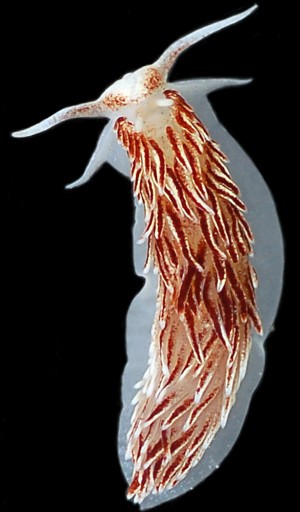
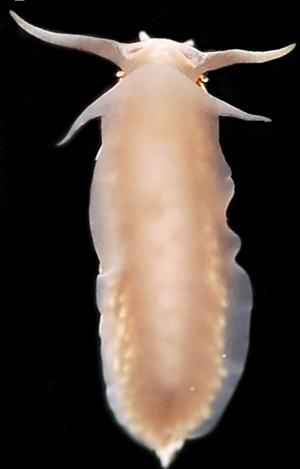

Dear Alexei,
Thanks for another interesting range extension around the north Pacific
Best wishes,
Bill Rudman
Cerberilla mosslandica here on Vancouver Island
February 23, 2007
From: Wendy Carey

Hi Bill;
It looks like we have the Cerberilla mosslandica here on Vancouver Island! I've had Jackie Hildering and Sandra Millan from the Zoology Dept at University of British Columbia give me the thumbs up on it. You are free to use the pictures to post, just let me know you are using them, what for and please give me credit for the photos.
They were found in Maple Bay on Vancouver Island, near Duncan, British Columbia, Canada on February 11th 2007 at a depth of 30 feet at about 6:30 pm, we also spotted them at midnight the week before. The size was about 5-6 mm. They were found in pairs on a sandy bottom some burying themselves. Thanks for keeping the records for ourselves and future generations.
You might like to check out my website at www.badgercastlepublishing.com and pass the word on about my new book on underwater life Up Close and Personal
Regards,
Wendy Carey
mamabadger@shaw.ca

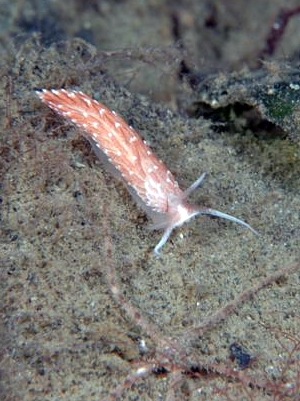
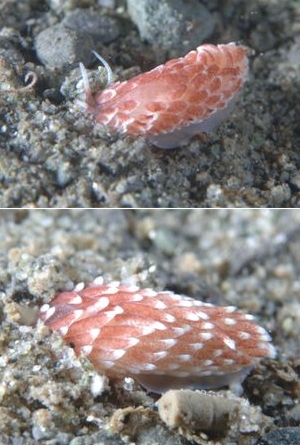
Dear Wendy,
Thanks for this nice find which I am pretty sure extends the range of this species north of the border. It's not quite as spectacular as some of the tropical species of Cerberilla, but I find all the genus fascinating. The only species we know anything about is the Mediterranean Cerberilla bernadettae, which Tardy studied so diligently. From his work we think that all species feed on burrowing sea anemones, but it would be nice to have some more evidence. One problem with studying the biology of these animals is that they spend most of their life buried, hidden from the prying eyes of biologists. Now that you have found a population, perhaps you could encourage a student from UBC to take them on as a project.
Best wishes,
Bill Rudman
